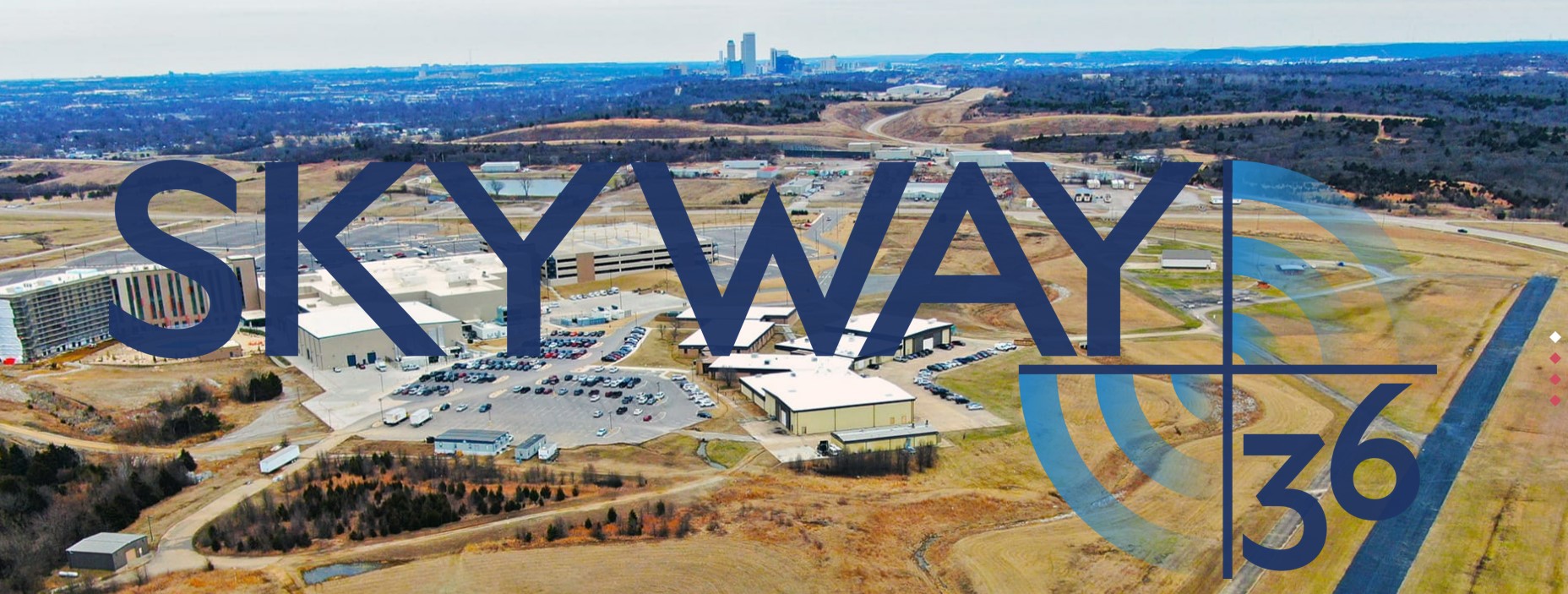
- Details
- By Chez Oxendine
- Economic Development
A $39 million investment for the Indian Nation Council of Governments bore its first fruit in early December by way of a partnership between the Osage Nation and Oklahoma City-based DronePort Network.
A developer of business and financial strategies for the aeronautics industry, DronePort will manage a planned 114-mile flight corridor between Oklahoma State University, Osage Nation, and Tulsa facilities.
In addition to the Skyway36 flight corridor, DronePort will manage a hangar and office space, 3,000-foot runway, and helipad space for unmanned drones and other flight systems. All told, the partnership will enable flight testing across 2,300 square miles of airspace, according to DronePort.
“We are excited to welcome DronePort Network to the Osage LLC team,” Osage LLC board member Rick Perrier told Tribal Business News, noting that DronePort “brings the knowledge, sophistication and business development skills necessary to advance Skyway36 into the future.”
“With their focus on economic prosperity and job creation, we anticipate this new partnership to create high-paying emerging technologies jobs in the Osage Nation,” Perrier said.
DronePort CEO Craig Maheny said the partnership will help Osage LLC develop and test new technologies for an emerging aeronautics and electric vehicle presence.
“The vision for Skyway36 is a commercial test bed for the integration of autonomous flight technology into our everyday lives,” Maheny said in a statement.
The flight corridor builds on the $39 million Tulsa Regional Advanced Mobility Cluster, a collection of four projects that garnered funding from the U.S. Department of Commerce Economic Development Administration’s Build Back Better Challenge in September.
In addition to the flight corridor, the projects included a research and development center, a workforce development program and facility, and a wastewater treatment facility that will help make roughly 2,200 acres of industrial space in Tulsa’s Port of Inola available for use.
The Indian Nation Council of Governments, an organization that partners with local city and tribal governments in the Tulsa region, led the initiative for the TRAM Cluster in late 2021 when submitting applications.
“The Build Back Better Regional Challenge was an extraordinarily competitive regional competition. We were one of something like 21 winners out of over 500 applications,” said Council executive director Rich Brierre. “We were really pleased with the result.”
The project summary details the cluster as a response to a “dramatic shift in mobility that has the potential to completely disrupt the global economy,” securing the Council of Governments and the Cherokee, Osage and Creek tribes a place in a purported $2 trillion market.
A project summary analysis of the cluster predicts it will have an economic effect of $3.5 billion to $5 billion over its first two to three years of operation. That boost could be important as the region faces major economic headwinds. The Council’s project narrative asserted an entry into the electric vehicle and unmanned aircraft markets could balance out a growing poverty rate (which rose from 11.0 percent in 2010 to 14.3 percent in 2019) and a slow turn from energy dominance amid the push to abandon fossil fuels that have traditionally driven the local economy.
For the flight corridor specifically, the Council expects to create roughly 100 jobs in the short term, as well as 65 direct jobs in the accompanying hangar.
The TRAM Cluster project expects the flight corridor to come online in the first quarter of 2024.
By building a nexus of development and leveraging local resources such as the more than 120,000-person existing state workforce in aerospace and defense, local partnerships, and Oklahoma’s status as an energy producer, the TRAM Cluster could rapidly “accelerate” the job market in Tulsa and its surrounding communities, Brierre said.
“We’re building on the region’s strengths,” Brierre said. “I really think what (the Cluster) is, is a way to position our region for future jobs in this developing market.”
